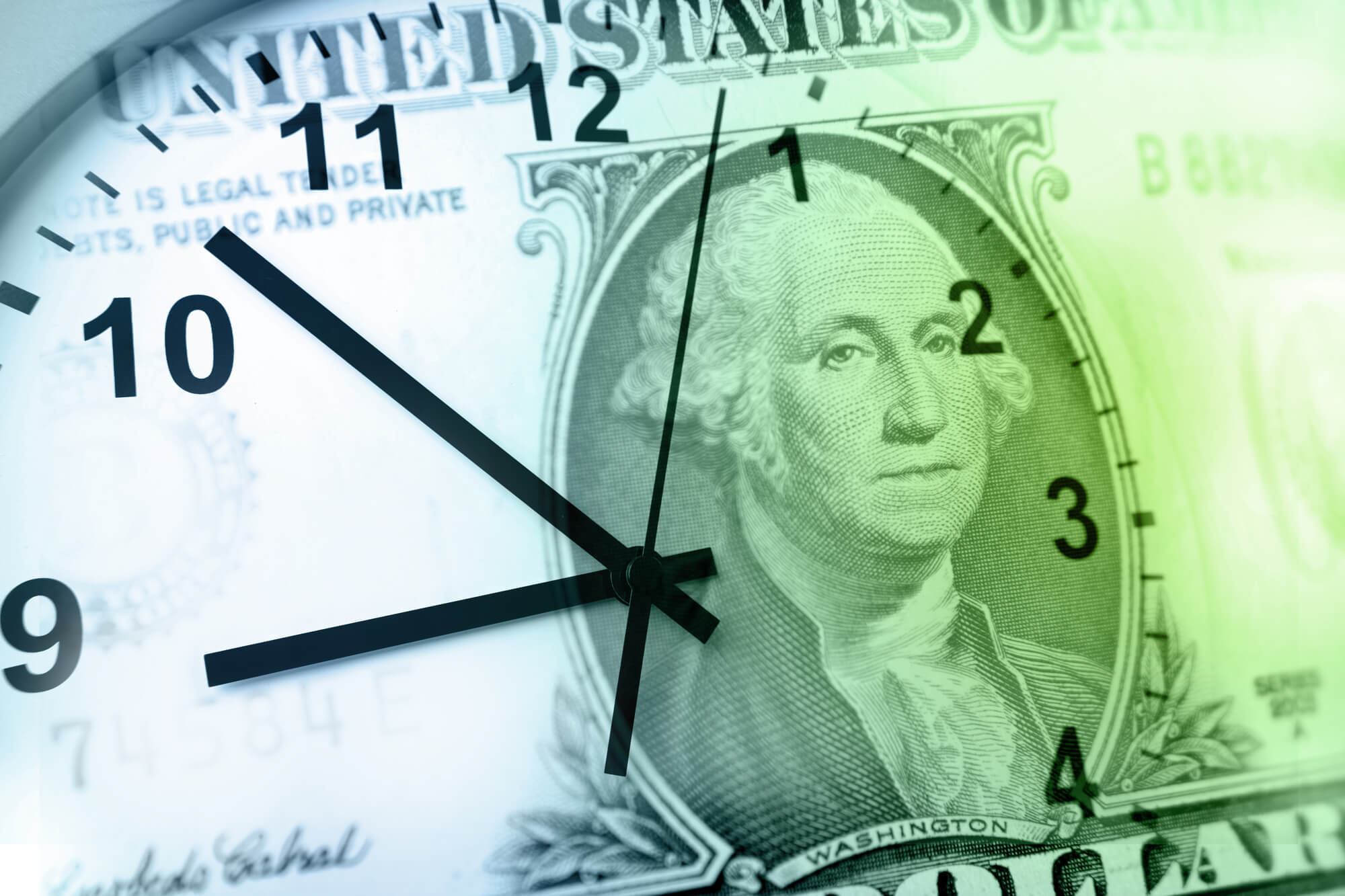Are you hearing talk about a “savings rate” but don’t know where to begin? How do you find your savings target, and how do you reach it?
As a general rule, you should save a minimum of 20% of your income each month. If you are trying to reach financial independence, you should save 50% of your income. A 25% savings rate will enable you to reach financial independence in 32 years, while a savings rate of 50% will help you reach financial independence within 17 years. A savings rate of 75% or higher will help you reach financial independence within 7 years.
Once you’re saving 50% of your income, increase your savings rate to 75%, or find a comfortable rate that balances your income and spending threshold. Doing so will help you avoid lifestyle inflation while you mature into your higher income earning years. It may be difficult to reach a 50% savings rate initially, so begin with a 1% savings rate. Next, set a 5% savings rate target. From there, make a goal to increase your savings rate to 10%, 25%, and eventually 50%.
Finding the best savings rate for you is based on your personal finance goals. Whatever they are, setting your target will set you up for success.
What is a Good Savings Rate?
20% is a great savings rate to begin. It allows enough room to save for the short term (0-1 years), mid term (1-10 years), and long term (10-50+ years). You can divide your 20% savings into those buckets (short term, mid term, and long term).
For example, let’s say you want to plan for a vacation, a house, and for retirement. Your vacation is a short term goal, the house is a mid term goal, and your retirement is a long term goal. We’ll begin with your long term goal, since you’ll want to ensure you save money for your future self first. Doing so will keep you from overspending in the near term, and will guarantee you have money come retirement. The retired version of yourself will thank you.
To begin, you should be saving at least 10-15% of your income for retirement. Luckily, you can include your employer 401(k) match if you have one. That means your 5% employer match can be added to your 10% contribution for a total of 15% savings in your retirement fund. After all, it’s free money directly into your savings!
Next, divide up the remaining percentage accordingly. If you make $75,000 and want to save for a $1,500 vacation next year, you only need to save 2% ($1,500 / $75,000 = 0.02 or 2%). That would leave the other 8% savings for your mid term goal ($6,000 each year). In five years, you would have enough savings for a $30,000 down payment on a home ($6,000 x 5 = $30,000). You can adjust your mid or short term savings based on your goals, and your timelines. If you need more money sooner, save more in one category and less in another.
As for the rest of your money, you can follow the 50 / 30 / 20 rule of thumb. 50% of your remaining income will go to necessities, and 30% may go toward discretionary items. However, if you want to find other savings / spending rates that will work better for you, find the best percentage split for you budget here.
These savings rates are a good place to start, but if you’re looking to reach financial independence sooner, you’ll need to increase your savings rate.
Is a 25% Savings Rate Good to Reach Financial Independence?
25% is a good savings rate to begin working toward financial independence. If your financial independence number is $1,875,000, you have an annual income of $100,000, and your savings rate is 25% ($25,000 annually), you can reach financial independence in 32 years (assuming a current zero net worth and estimated 5% annual returns on investment). Opposed to a 15% savings rate with the same income level, you’d get an extra 10 years of your life back due to having a higher savings rate.
| Annual Income | Annual Savings | Savings Rate | Annual Expenses | FI Number (Annual Expenses / 4%) | Years to FI |
| $100,000 | $25,000 | 25% | $75,000 | $1,875,000 | 32 |
Saving 25% of your income is a good stepping stone when it comes to increasing your savings rate from 10% or 20%. However, you can improve to better and best savings rates over time.
Is a 40% Savings Rate Better to Reach Financial Independence?
Saving 40% of your income will allow you to reach financial independence quicker. Assuming a financial independence number of $1,500,000, an annual income of $100,000, and a savings rate of 40% ($40,000 annually), you would be able to reach financial independence in 21 years (assuming a current zero net worth and estimated 5% annual returns on investment). Opposed to a 25% savings rate with the same income level, you’d get an extra 11 years of your life back due to a higher savings rate.
| Annual Income | Annual Savings | Savings Rate | Annual Expenses | FI Number (Annual Expenses / 4%) | Years to FI |
| $100,000 | $40,000 | 40% | $60,000 | $1,500,000 | 21 |
While saving 40% of your income is better than saving 25%, you should target a savings rate even higher than that.
Is a 50% Savings Rate Best to Reach Financial Independence?
Saving 50% of your income will help you reach financial independence. Assuming a financial independence number of $1,250,000, an annual income of $100,000, and a savings rate of 50% ($50,000 annually), you would be able to reach financial independence in 17 years (assuming a current zero net worth and estimated 5% annual returns on investment). As opposed to a 25% savings rate holding the same income level, you’d get an extra 15 years of your life back – a decade and a half of savings.
| Annual Income | Annual Savings | Savings Rate | Annual Expenses | FI Number (Annual Expenses / 4%) | Years to FI |
| $100,000 | $50,000 | 50% | $50,000 | $1,250,000 | 17 |
But, what happens if you increase your savings rate to more than 50%?
75% Savings Rate Impact on Retirement
Having a savings rate of 75% will enable you to reach financial independence in 7 years. Assuming a financial independence number of $625,000, an annual income of $100,000, and a savings rate of 75% ($75,000 annually), you would be able to reach financial independence in 7 years (assuming a current zero net worth and estimated 5% annual returns on investment). As opposed to a 25% savings rate holding the same income level, you’d get an extra 25 years of your life back – nearly three decades worth of savings.
| Annual Income | Annual Savings | Savings Rate | Annual Expenses | FI Number (Annual Expenses / 4%) | Years to FI |
| $100,000 | $75,000 | 75% | $25,000 | $625,000 | 7 |
The more you increase your savings rate, the faster you will reach financial independence. However, when determining the best savings rate for you, it’s imperative to consider your timeline to reaching financial independence and the constraints and opportunities present in your life.
What is the Best Savings Rate?
The best savings rate is the rate that will help you reach financial independence according to your timeline. If your goal is to reach financial independence in 32 years, you should have a savings rate of 25%. If your goal is to reach financial independence in 17 years, you should have a savings rate of 50%. If your goal is to reach financial independence in 7 years or less, you should have a savings rate of 75% or more.
The more you increase your savings rate, the faster you will reach financial independence.
Find your savings rate below by matching it with your expected timeline or goal of reaching financial independence.
| Savings Rate | Years to FI |
|---|---|
| 5% | 65 |
| 10% | 51 |
| 15% | 42 |
| 20% | 36 |
| 25% | 32 |
| 30% | 28 |
| 35% | 24 |
| 40% | 21 |
| 45% | 19 |
| 50% | 17 |
| 55% | 14 |
| 60% | 12 |
| 65% | 11 |
| 70% | 9 |
| 75% | 7 |
| 80% | 6 |
| 85% | 4 |
| 90% | 3 |
| 95% | 2 |
Note that the above calculations are based on a current net worth of zero, a financial independence number based off of the 4% rule, and an expected return of 5% (adjusted for inflation) on your investments.
Remember that a savings rate is not a silver bullet, however. If assumptions regarding your savings rate are based off of an investment return higher than your actual return, or if you plan on spending more money than you do in your current savings rate calculations once you retire, it will take you longer to reach financial independence.
For more details on avoiding these pitfalls, read here.
Increase Your Income to Increase Your Savings Rate
Over the course of your income earning years, you’re likely to make more money through promotions or pay raises. As you increase your income, it’s important to maintain a consistent level of spending in order to reach financial independence quicker. If you do, the more you make = the more you save.
For example, let’s say you have an annual income of $75,000. If you had an FI target of 7 years, you’d need to have a 75% savings rate, and annual expenses of $18,750. Let’s say you can’t decrease your expenses to $18,750, and instead found that $50,000 was your spending threshold. Increasing your income to $200,000 from $75,000 would yield a 75% savings rate ($200,000 annual income – $50,000 expenses = $150,000 savings. $150,000 / $200,000 = .75 or 75%) and would be a more practical way to hit your savings target than to struggle to live off of $18,750 every year.
| Annual Income | Annual Savings | Savings Rate | Annual Expenses | FI Number (Annual Expenses / 4%) | Years to FI |
| $75,000 | $56,250 | 75% | $18,750 | $468,750 | 7 |
| Annual Income | Annual Savings | Savings Rate | Annual Expenses | FI Number (Annual Expenses / 4%) | Years to FI |
| $200,000 | $150,000 | 75% | $50,000 | $1,250,000 | 7 |
For more details on increasing your income vs decreasing your expenses when trying to enhance your savings rate, read here.
Summary
20% is a good savings rate as a general rule of thumb. Savings targets of 25%, 50%, and 75%+ will help you get to financial independence quicker. The higher your savings rate, the faster you will climb your financial mountain. For tips on how to increase your savings rate, check out this article. Remember that the best savings rate will be the one that works with your financial independence timeline. Keep at it and you’ll get there at the time and in the way that works best for you.
More Savings Rate Articles
If you’re hungry to learn more about your savings rate, we’ve put together a comprehensive guide for you that will teach you everything you need to know.
Ultimate Savings Rate Guide: Everything You Need to Know
Looking for deeper dives on a particular subject? Check out the rest of the articles from our Savings Rate series.
Savings Rate 101: How to Calculate Your Savings Rate
Savings Rate 201: How to Beat the Savings Rate Next Door
Savings Rate 301: Avoid These Pitfalls With Your Savings Rate
Savings Rate 501: The Best Ways to Increase Your Rate
Savings Rate 601: Increase Income or Cut Expenses?
See you at the top of your financial mountain.
Climb on, FinBase.









